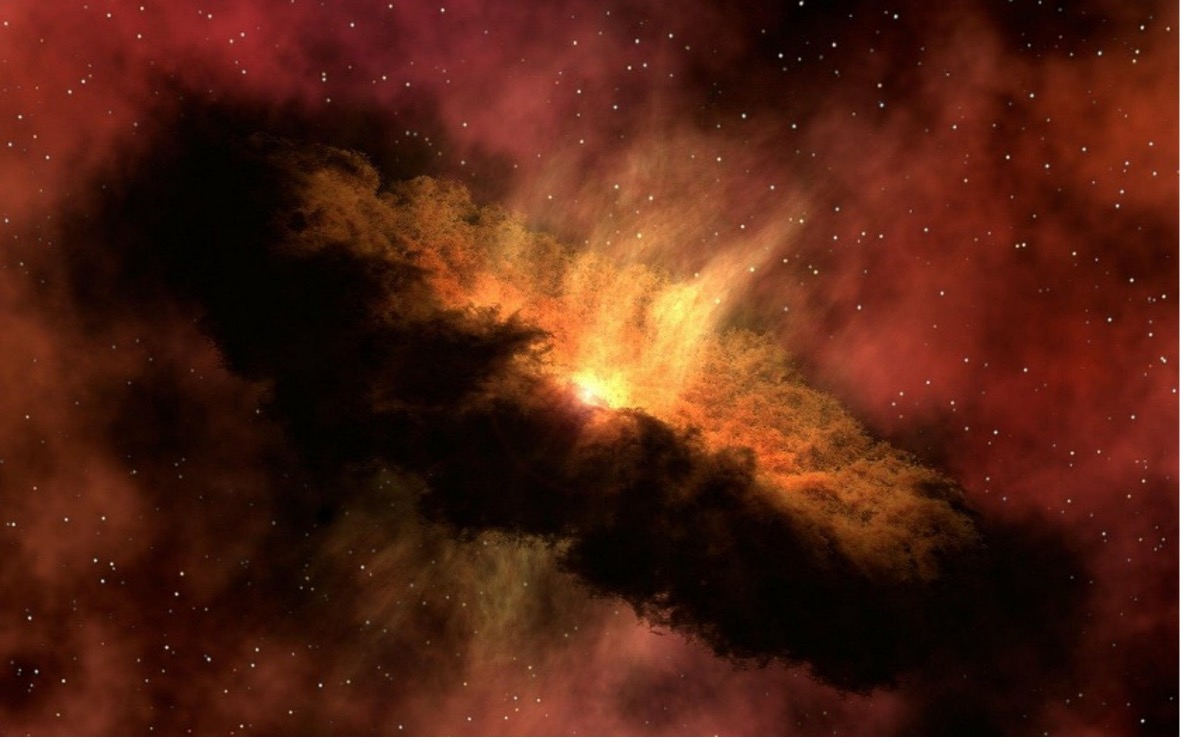 Earth & Space
Earth & Space
Turning on the lights: how long did it take for the Sun to form?
We have long known the Solar System formed from the collapse of a large cloud of stellar gas and dust. Here, we studied the earliest solids that resulted from this event and found that not only was the cloud made of diverse materials, but it collapsed to form the Sun in just a blink of an eye at the geological timescale.

Prehistoric cave dwellers adorned their homes with drawings of the Sun, stars, and planetary bodies of the Solar System, so it is safe to say that objects beyond Earth have been fascinating humans since long before our species could even express their awe in written form. The allure of outer space has certainly continued, and, thanks to telescopes, astronomical observations have taught us – among countless other things – how other stellar systems form and evolve. But how do we learn about the inception and evolution of our own stellar neighborhood, the Solar System, when we are a few billion years too late?
Fortunately, we have witnesses of the earliest epoch of the Solar System in the form of meteorites. One group of meteorites - called chondrites – are unmelted collections of disparate cosmic materials that coalesced over 4.5 billion years ago and have remained virtually unchanged. The most primitive types of chondrites harbor the earliest dated materials known in the Solar System, called (rather clunkily) calcium-aluminum–rich inclusions or CAIs. Because these inclusions were the first solids to form in the Solar System, they contain clues to the conditions and processes that existed when we transitioned from a cloud of gas and dust to a stellar system with a central star and orbiting planets.
The building material of CAIs differs from later-formed solids in their isotope content. Isotopes are nuclei of the same chemical element that vary in their neutron number. Different stellar environments (e.g. supernovae, dwarf stars, etc.) predictably produce characteristic isotopes that can be used to determine which material was incorporated (akin to forensic specialists using fingerprints). In this work, we investigated the isotopic difference between meteorites by focusing on the element molybdenum, because its isotopic signatures can provide clear information about the source of that difference.
To do this, we located and removed several CAIs from a few different chondrite meteorites, which were acquired from private meteorite dealers and museum collections. Once the CAIs were separated from the meteorite matrix, we produced thin sections from small pieces of the samples in order to characterize them with a microscope, as it was important that we selected a wide variety of sample types. Once the samples were fully dissolved in strong acids, we determined major and trace element concentrations to further classify and group the samples. We then separated and measured the isotopic compositions of molybdenum and other helpful elements like titanium, strontium, and tungsten, to compare with other studies that analyzed these elements in similar samples.
The CAIs of our study and previous ones had comparable isotopic signatures in many elements: there was nothing inherently different about the specific samples we chose. However, we found a remarkable difference between CAIs and all other later-formed Solar System material in one particular signature—discernable using molybdenum. This isotopic variation represents changes in the type of material that fell onto the nascent Sun as it formed, providing evidence that CAIs formed extremely early in the Solar System history, while the Sun was forming.
Whereas this observation is enthralling in its own right, our data become even more relevant since CAIs formed near the young Sun in a known short period of geologic time. Our study concluded that the majority of the dust and gas collapsed to form the Sun in fewer than 200,000 years.
To put that into perspective, most of the matter in the Solar System coalesced and formed a central star in about the same amount of time it takes for the continents of Africa and South America to move 5 kilometers (3 miles) further apart.
Original Article:
Brennecka, G. et al. Astronomical context of Solar System formation from molybdenum isotopes in meteorite inclusions. Science 370, 837-840 (2020)Next read: Is the Sun a Sun-like star? by Timo Reinhold , Alexander I. Shapiro
Edited by:
Dr. Margaux Héritier , Senior Scientific Editor
We thought you might like
The escape of the Sun’s fraternal twin
May 8, 2018 in Earth & Space | 3.5 min read by Sarah Sadavoy , Steven StahlerMore from Earth & Space
Discovery of the first radiation belt beyond the Solar System
Jan 27, 2025 in Earth & Space | 3.5 min read by Juan Bautista Climent OliverOne million (paper) satellites
Jan 24, 2025 in Earth & Space | 3 min read by Ewan Wright , Andrew FalleVolcanic Ash: A Nutrient Boost for Reef-Building Corals
Sep 18, 2024 in Earth & Space | 4 min read by Frank Förster , Tom SheldrakeAmmonia Energy: A Call for Environmental Awareness
Aug 29, 2024 in Earth & Space | 3.5 min read by Matteo Bertagni , Robert Socolow , Amilcare PorporatoLikely increase in coral thermal tolerance at a Pacific archipelago
Dec 29, 2023 in Earth & Space | 3 min read by Liam LachsEditor's picks
Trending now
Popular topics


